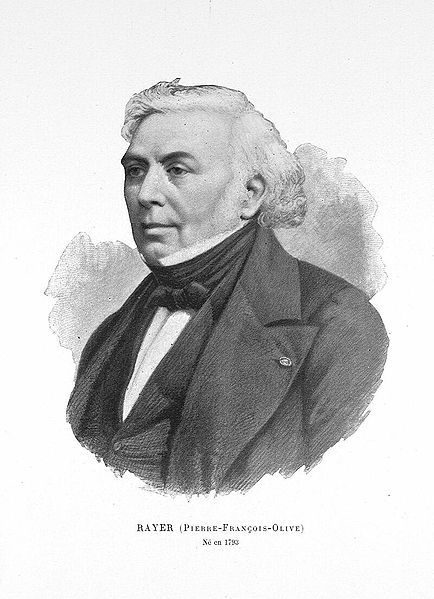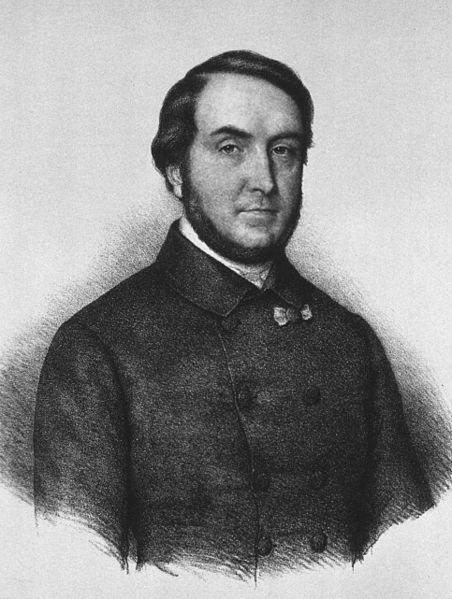<Back to Index>
- Physician Pierre François Olive Rayer, 1793
- Dermatologist Pierre Louis Alphée Cazenave, 1795
PAGE SPONSOR

Pierre François Olive Rayer (8 March 1793 – 10 September 1867) was a French physician who was a native of Saint Sylvain. He made important contributions in the fields of pathological anatomy, physiology, comparative pathology and parasitology.
He studied medicine at Caen, and afterwards in Paris at the Ecole Pratique des Hautes Etudes and at the Hôtel - Dieu. He became an interne of medicine in 1813, and in 1818 earned his medical doctorate. Later he became a physician at Hôpital Saint - Antoine (1825), and at the Hôpital de la Charité (1832), and was also a consultant - physician to King Louis - Philippe. In 1862 he attained the chair of comparative anatomy at the Faculty of Medicine of Paris.
In 1837 Rayer discovered that the fatal equine disease known as glanders was contagious to other species including humans. Between 1837 and 1841 he published a three volume book on diseases of the kidney titled Traité des maladies des reins. In 1850 Rayer published a work that provided the first comprehensive description of anthrax. In this treatise he documented studies he performed with physician Casimir Davaine (1812 - 1882) concerning Bacillus anthracis.
Rayer was a member of the Académie de Médecine and the Académie des Sciences, and co-founder of the Société de biologie, of which he was also president. He maintained friendships with several influential people in France; including naturalist Isidore Geoffroy Saint - Hilaire, novelist George Sand, philosopher Emile Littré, and several disciples of Henri de Saint - Simon.
Eponyms associated with Pierre Rayer:
- Rayer's disease: A disorder characterized by chronic jaundice, splenomegaly, and hepatomegaly.
- Rayer's nodules: An xanthoma; yellowish nodules on the skin (often on the eyelids).

Pierre Louis Alphée Cazenave (1795 – 1877) was a French dermatologist who practiced medicine at the Hôpital Saint - Louis in Paris.
In 1823 he was appointed interne to the hospitals of Paris, and in 1835 became professor agrégé to the medical faculty. Cazenave was a student of Laurent - Théodore Biett, a physician who introduced into France an anatomical approach for analysis of skin disorders. This analytical method was first developed by two English physicians, Robert Willan and Thomas Bateman.
In 1828 with Henri Édouard Schedel, he published a book based on Biett's lectures and observations titled Abregé pratique des maladies de la peau. This compilation was to become a highly influential dermatological work, being translated into a number of different languages.
From 1844 until 1852, Cazenave was editor of Annales des Maladies de la Peau et de la Syphilis, which was a journal dedicated to scientific dermatology.
He is credited with coining the term "lupus erythematosus", which he derived from Biett's symptomatic descriptions of the disease. In 1844 he described pemphigus foliaceus as a special type of pemphigus.